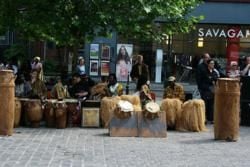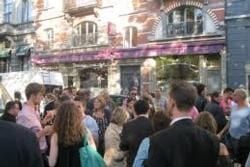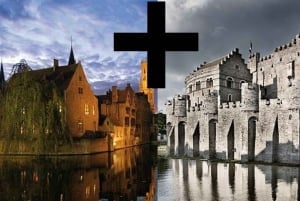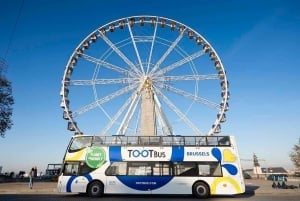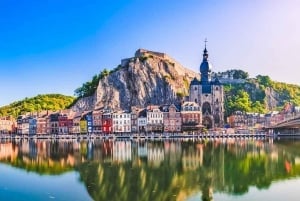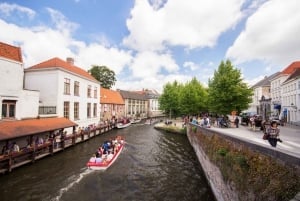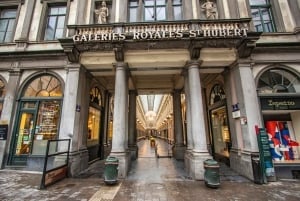Ixelles / Saint Gilles
Ixelles and Saint-Gilles are two of the 19 communes of Brussels, they are located next to the historic heart of the city and are bursting with interesting things to see and do.
Ixelles
Cut in two by the avenue Louise, the district of Ixelles holds many surprises. As you walk through it you’ll discover the immense talent of the Belgium architects who have left in their wake the magnificent Abbaye de la Cambre (Abbey of la Cambre) and the impressive 1930’s building known as the Boat which used to house the National Institute of Broadcasting (INR).
These two architectural examples can be found in the quarter around Flagey Square and the ponds of Ixelles. Today, the Boat is a cultural space which houses five rooms – each with their own exceptional acoustics. This is the ideal place to come and indulge in a bit of culture after sipping a Belgian beer in a trendy café nearby…
In the 19th century, Ixelles became the cultural centre of the city. Considered ‘avant-guard’, the town had all the artistic activities you needed: from theatre, music and dance to cinema. They also welcomed the French speaking Universtié Libre de Bruxelles (ULB), as well as the Flemish counterpart Vrije University of Brussles (VUB). The students invested in the areas surrounding the perimeter of the cemetery of Ixelles which is made up of numerous cafes and restaurants – from budget options to more the more luxurious. You’ll also find here an impressive array of Thai and Vietnamese restaurants, serving delicious cuisine at unbeatable prices.
If you fancy exploring further you have two options.
The ‘nature’ option: take the route towards the Bois de la Cambre (Wood of Cambre) and walk the little paths that meander the ponds of Ixelles up to Abbaye de la Cambre.
Or the ‘city’ option: make your way towards the Chatelain quarter. Head up the avenue Lesbroussart onto Bailly Road. Once you’re in front of the Eglise de la Trinité (Trinity Church) take l’Aqueduc Street on your left to Chatelin Square. On Wednesdays this square welcomes a large market selling a range of fresh produce. Local residents and those further afield come down here to meet, have a drink and enjoy the festive atmosphere.
This area is also the heart of Art Nouveaux architecture and the Horta Museum is close by. A little further up Page Street or Tabellion Street you’ll also come across the quarter housing Brugmann Square. While this is mostly residential, you’ll also find a good number of restaurants here as well as some chic hotels.
But Ixelles is also the Porte de Namur, with its numerous shops and the Matonge quarter (named after a district of Kinshasa, the capital of Congo, the ancient Belgian colony) where a small Congolese community has recreated the animation of a busy African neighbourhood. A change of scenery guaranteed!
Saint-Gilles
Saint-Gilles is smaller than the region of Ixelles and owes its name to the monk Gille l’Ermite. Many pilgrims came here to cure nervous illness and also to protect children. It’s worth knowing today that this community, considered a small village, was particular in welcoming in no fewer than 130 nationalities. This multicultural mix gave Saint-Gille a real drive and you will have the chance to discover the many points of interest the area possesses at the heart of its different quarters.
The Town Halldominates the area around Van Meenen Square. Considered the historic heart of the town this square hosts a colorful daily market. The locals come here to meet-up and make the most of having a break in one of the many typically Belgian cafes or bars which line the square.
The Parvis quarter, is also rich in Belgian artists. After visiting the Jacques Francq Cultural Centre, you will be able to find them sat around a beer at the ‘House of People’ enjoying the concert of the day.
If you would still like to discover an Art Nouveaux masterpiece come and take a look at the works of architect Blerot from number 1 to 25 on Van der Schrick Street – found between Jean-Volders Avenue and the road to Waterloo.


